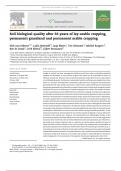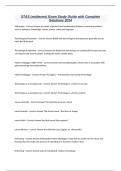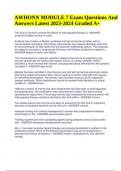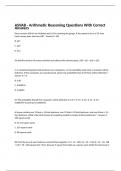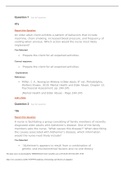Soil biological quality after 36 years of ley-arable cropping,
permanent grassland and permanent arable cropping
Nick van Eekerena,*, Lydia Bommele ´b, Jaap Bloemc, Ton Schoutend, Michiel Rutgersd,
Ron de Goedee, Dirk Reheulb, Lijbert Brussaarde
aLouis Bolk Institute, Department of Organic Agriculture, Hoofdstraat 24, NL-3972 LA Driebergen, The Netherlands
bGhent University, Department of Plant Production, Coupure Links 653, B-9000 Gent, Belgium
cWageningen University and Research Centre, Alterra, Soil Science Centre, P.O. Box 47, NL-6700 AA Wageningen, The Netherlands
dNational Institute for Public Health and the Environment, P.O. Box 1, NL3720 BA Bilthoven, The Netherlands
eWageningen University, Department of Soil Quality, P.O. Box 47, NL-6700 AA Wageningen, The Netherlandsapplied soil ecology 40 (2008) 432–446
article info
Article history:
Received 27 August 2007
Received in revised form
20 June 2008
Accepted 30 June 2008
Keywords:
Earthworms
Nematodes
Microbiology
Soil biota
Crop rotation
Grasslandabstract
Insight is needed into how management influences soil biota when sustainable grassland
systems are developed. A crop rotation of grass and maize can be sustainable in terms of
efficient nutrient use. However, there is lack of information on the effect of such a crop rotation
on soil biological quality. Earthworms, nematodes, bacteria and fungi were sampled over three
years in a 36 years old experiment. Permanent arable land was compared with permanent
grasslandandwithaley-arablecroprotation.Intherotation,aperiodofthreeyearsofgrassland
(temporary grassland) was followed by a period of three years of arable land (temporary arable
land) and vice versa. In the first year of arable cropping in the rotation, the number of earth-
worms was already lowand notdifferent from continuouscropping.Inthe three-yeargrass ley,
the abundance of earthworms returned to the level of permanent grassland in the second year.
However, the restoration of earthworm biomass took a minimum of three years. Furthermore,
the anecic species did not recover the dominance they had in the permanent grassland. The
numbers ofherbivorous and microbivorous nematodes in the ley-croprotationreached similar
levels to those in the permanent treatments within one to two years. Although the same holds
for the nematode genera composition, the Maturity Index and the proportion of omnivorous
nematodes in the temporary treatments remained significantly lower than in their permanent
counterparts. Differences in recovery were also found among microbial parameters. In the
temporary treatments, bacterial growth rate and the capacity to degrade a suite of substrates
recovered in the second year. However, the Community-Level Physiological Profiles in the
permanent grassland remained different from the other treatments. Our results suggest that
many functions of soil biota that are well established in permanent grassland, are restored in a
ley-arable crop rotation. However, due to a reduction in certain species, specific functions of
these soil biota could be reduced or lost. The ley-arable crop rotations were intermediate to
permanent grassland and continuous arable land in terms of functioning of soil biota (e.g., N-
mineralization). In terms of the functional aspects of the soil biota, permanent grassland might
bepreferablewhereverpossible.Formaizecultivation,aley-arablecroprotationispreferableto
continuous arable land. However, a ley-arable crop rotation is only preferable to continuous
arable cropping if it is not practised at the expense of permanent grassland at farm level.
#2008 Elsevier B.V. All rights reserved.
*Corresponding author . Tel.: +31 343 523862; fax: +31 343 515611.
E-mail address: n.vaneekeren@louisbolk.nl (N. van Eekeren).available at www.sciencedirect.com
journal homepage: www.els evier.com/locate/apsoil
0929-1393/$ – see front matter #2008 Elsevier B.V. All rights reserved.
doi:10.1016/j.apsoil.2008.06.010 1. Introduction
Organic farming and reduced use of external inputs – such as
fertilizers and pesticides – in conventional agriculture, implies
a greater reliance on ecosystem self-regulating processes
(Yeates et al., 1997 ). Soil biota play an important role in these
processes and in the provision of various ecosystem services:
supply of nutrients, maintenance of soil structure, water
regulation and, more generally, in the resistance and
resilience of the below-ground system ( Brussaard et al.,
1997; Mulder, 2006 ). Grassland management directly and
indirectly influences the soil food web and its functions
(Bardgett, 2005 ). To develop and optimise sustainable grass-
land systems, insight is needed into how management
influences soil biota and how it affects the functioning of
the soil–plant system.
On dairy farms in The Netherlands, the main crops are
grass (mainly based on Lolium perenne L.) and maize ( Zea mays
L.). Due to legislative restrictions in The Netherlands, most
dairy farms have a maximum of 30% of their land cultivated
with maize. For economic reasons, both crops are mainly
continuously cropped, which is only possible thanks to the
addition of external inputs. However, recent legislative
restrictions on the use of organic and artificial N fertilizers
(Vellinga, 2006 ) and a quest for sustainable farming systems,
have brought attention back to crop rotations with grass and
maize. In an experiment with a three year grass and three year
maize rotation, Nevens and Reheul (2002) found that maize
yield was similar to that in continuous maize cultivation,
while the input of 231 kg of mineral N fertilizer ha/C01was saved
over the three-year period of maize in the rotation. In the same
experiment the average feed energy yield of grass in the three-
year ley phase was similar to that in permanent grassland
(Nevens and Reheul, 2003 ). Thus, compared to continuous
maize cropping and permanent grassland, a crop rotation of
grass and maize can be sustainable in terms of efficient
nutrient use. Furthermore, ley farming guarantees a high
clover content and provides an opportunity to control
perennial weeds on organic farms ( Younie and Hermansen,
2000 ). However, farmers lack information on the effect of a ley-
arable crop rotation on soil quality, especially about soil
biological quality, compared with continuous maize cropping
and permanent grassland. What are the consequences for soil
biological quality at field and farm level if the 30% of maize
now cultivated continuously is cultivated in rotation with
grass? Furthermore, what does this mean for the functions of
soil biota at field and farm level, in the short and long term?
Permanent grassland and continuous arable cropping
represent two types of land use that have distinct effects on
biological soil quality. Fromm et al. (1993) showed that the type
of cultivation (arable versus pasture) had more influence on
soil biota than different soil types. Yeates et al. (1998) and
Lamande ´et al. (2003) found earthworms to be more abundant
and populations to have greater biomass under long-term
pasture than under long-term cropping. Similar trends have
been found for collembola, nematodes and microbes ( Fromm
et al., 1993; Yeates et al., 1998; Steenwerth et al., 2002 ).
Various studies have reported changes in the composition
of soil biota on sites with an arable cropping history after
which a perennial pasture was established or cultivation wasabandoned. Yeates et al. (1998) found that earthworm
populations increased when perennial pasture was estab-
lished on sites formerly under arable cropping. In the case of
nematodes, Nombela et al. (1999) detected only a significant
difference in the Plant Parasite Index (PPI) during the recovery
time after temporary rye cultivation. Buckley and Smidt (2001)
found that the soil microbial community structure of an old
field, abandoned seven years after cultivation, retained more
similarities to cultivated sites nearby than to fields with a
similar plant community which had never been cultivated.
None of the above mentioned studies compared a ley-
arable crop rotation as a cropping system with permanent
grass or arable land. In the present research project we
analysed the soil biota in a long-term crop rotation experiment
established in 1966. Our objectives were (1) to determine the
long-term effects of a ley-arable crop rotation system on
earthworms, nematodes, bacteria and fungi, in comparison
with permanent grassland and continuous arable cropping,
and (2) to assess the short-term recovery of soil biota in a ley-
arable crop rotation. We explored the relevance of changes
and/or differences in soil functioning in the short and long
term. We hypothesised that three years of grass in a rotation
leads to a significant recovery of earthworms, nematodes,
bacteria, fungi and mineralization. Furthermore, we hypothe-
sised that, in the long term, the soil biota in a ley-arable crop
rotation would reach an intermediate position between
permanent grassland and continuous arable cropping.
2. Materials and methods
2.1. Sampling site and experimental design
In 1966, a crop rotation experiment was established on a sandy
loam soil at the experimental farm of Ghent University at
Melle (50 8590N, 038490E; 11 m above sea level). The clay ( <2mm),
silt (2–20mm), fine sand (20–200 mm) and coarse sand (200–
2000mm) contents of the soil were 86 g kg/C01, 116 g kg/C01,
758 g kg/C01and 40 g kg/C01, respectively ( Nevens and Reheul,
2001 ). Four treatments were established in a complete
randomised block design with four blocks. The individual
plot size was 750 m2. The four treatments were:
PG: Permanent grassland since 1966;
TG: Temporary ley-arable crop rotation, started in 1966 with
three years of grass ley followed by three years of arable
land cropped with forage crops;
TA: Temporary arable crop-ley rotation. This treatment is
comparable to TG but started in 1966 with three years of
arable cropping followed by three years of grass ley;
PA: Permanent arable cropping since 1966.
The history of the permanent grassland and the temporary
grassland is described in detail in Nevens and Reheul (2003) ,
and the permanent and temporary arable cropping systems in
Nevens and Reheul (2001) . In the seventh rotation of the trial
the TG treatment was established on 12 April 2002 after
rotavating the maize stubble of the preceding three years’
arable cropping. The seed mixture used was 40 kg L. perenne L.
ha/C01(cvs. Plenty and Roy) and 4 kg Trifolium repens L. ha/C01(cv.applied soil ecology 40 (2008) 432–446 433

